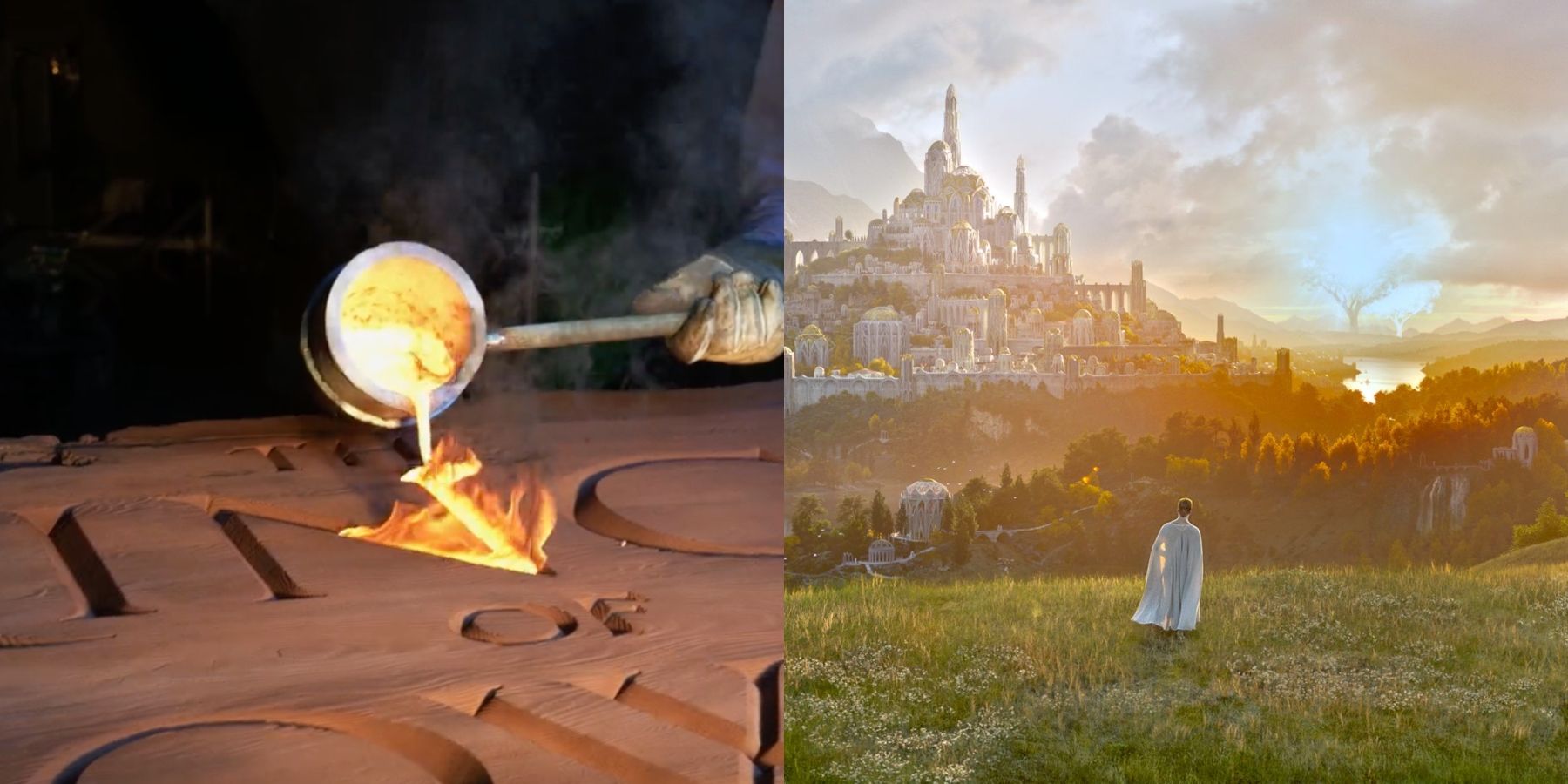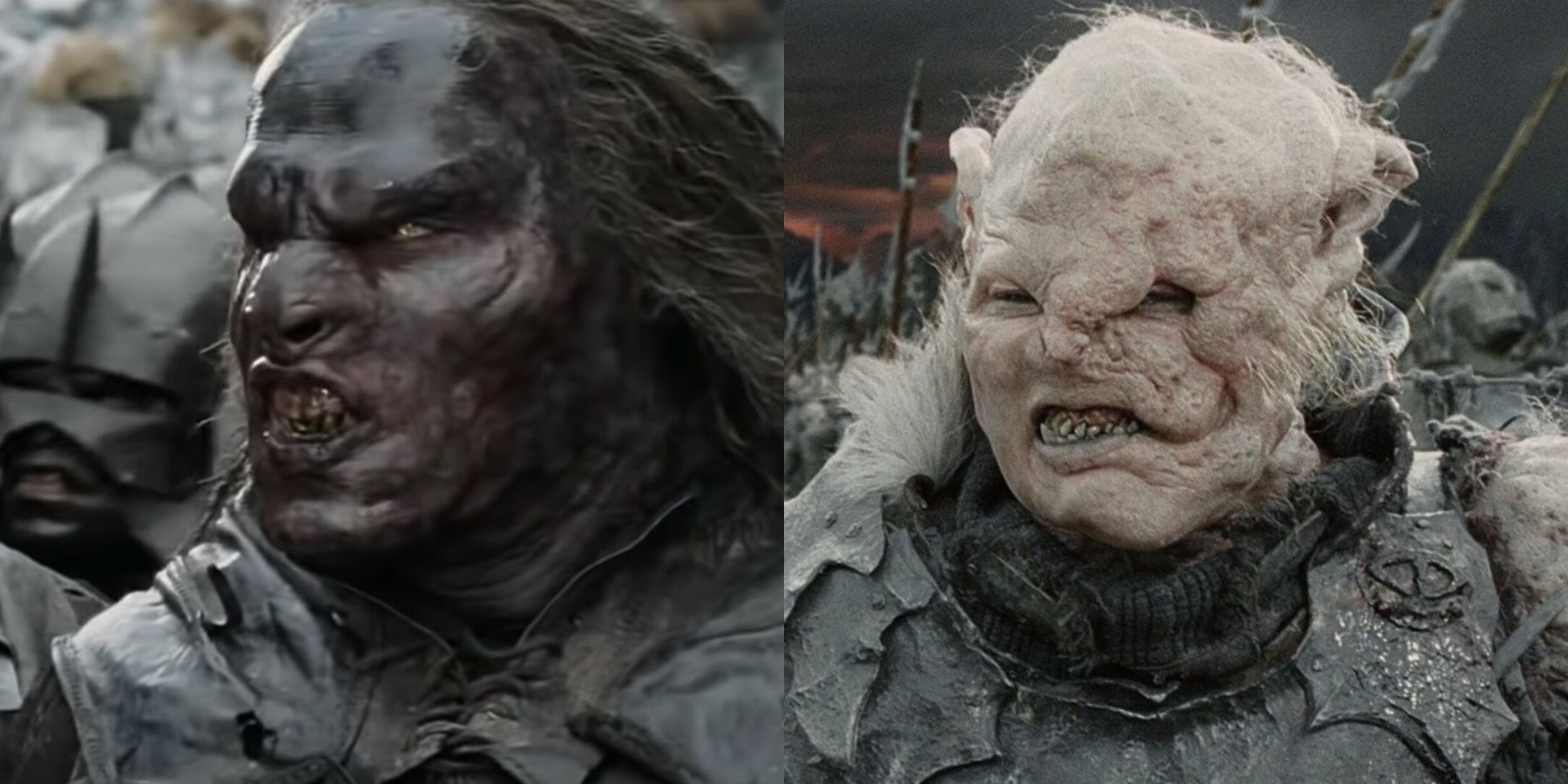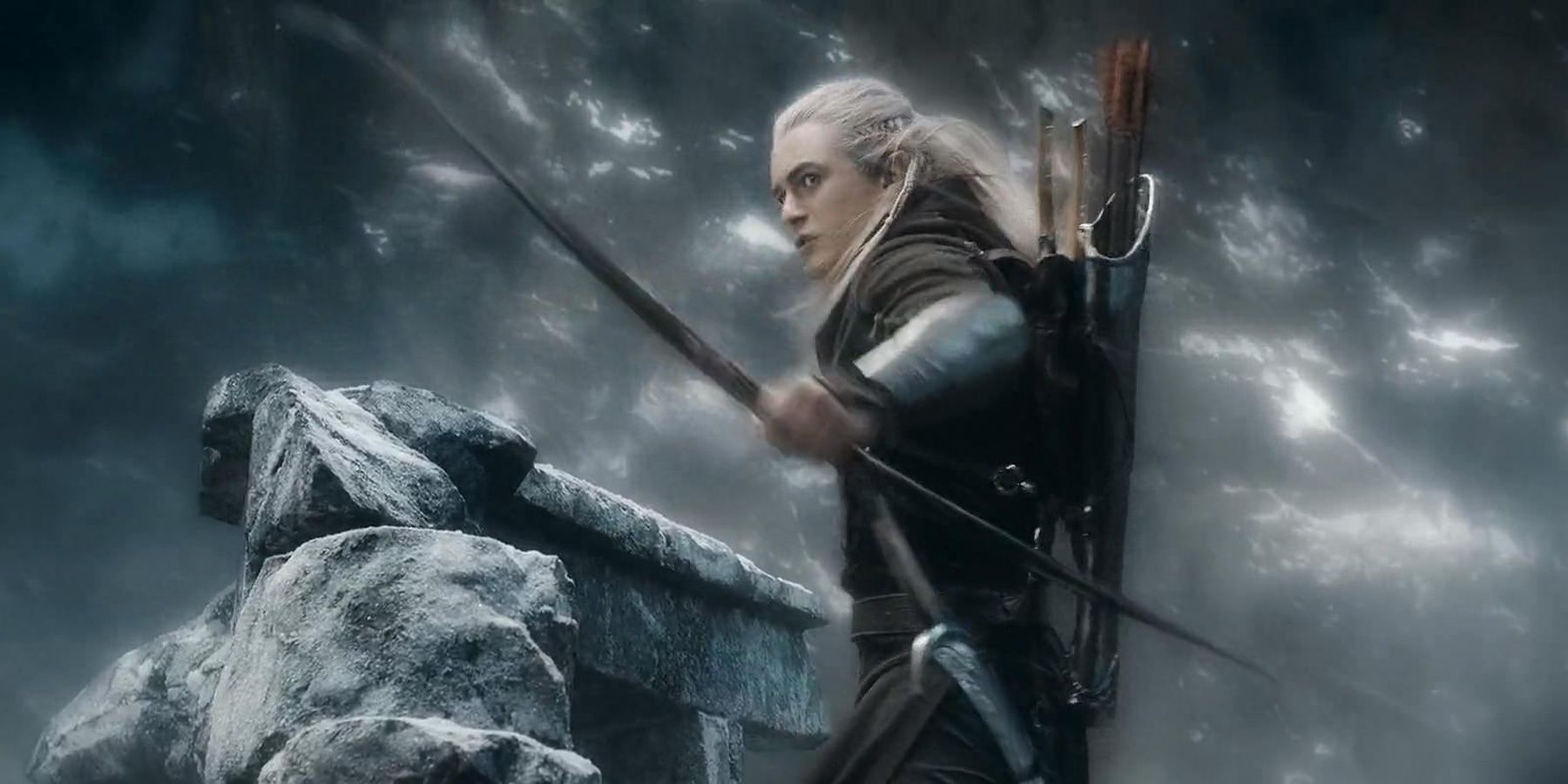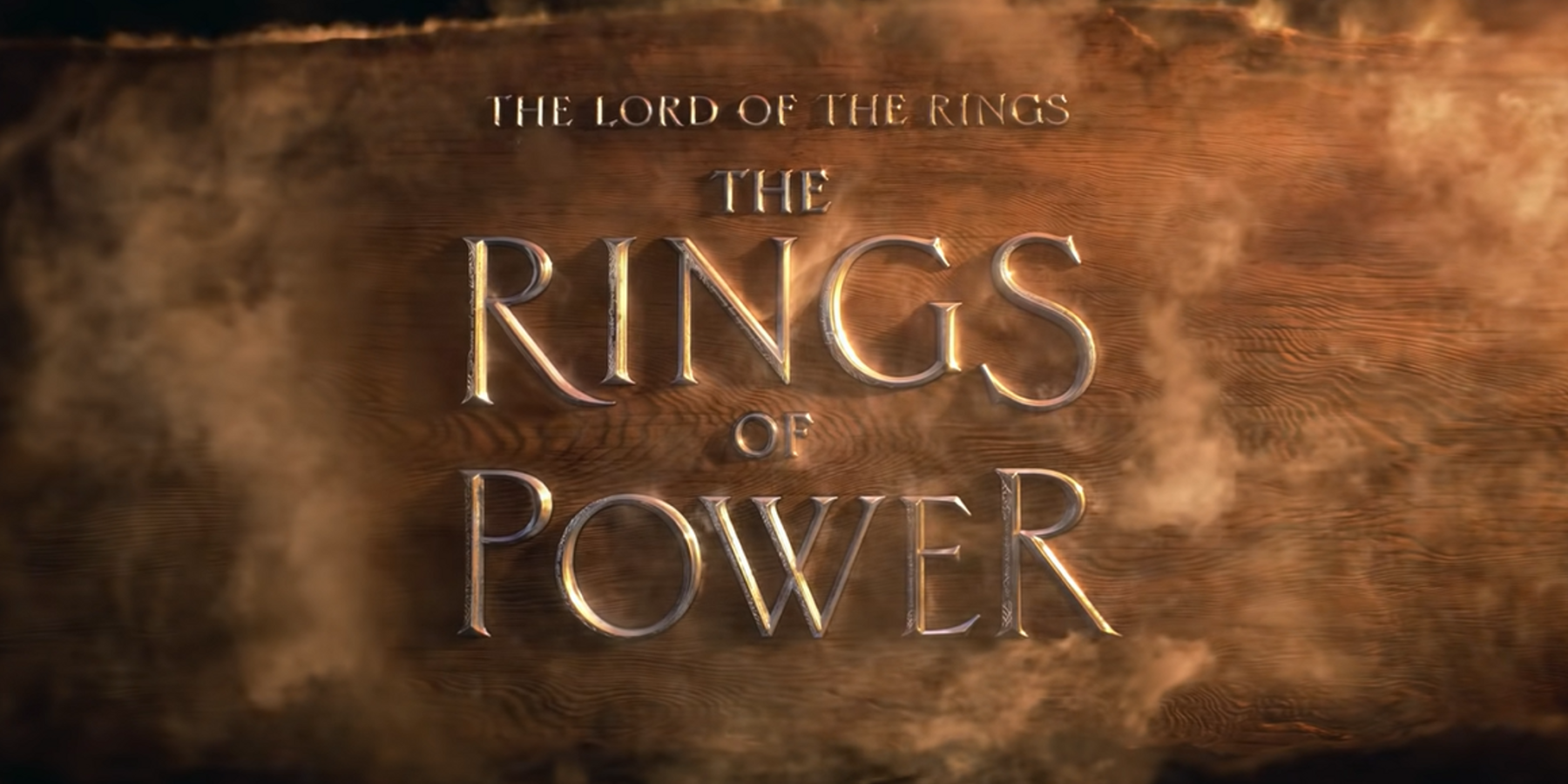The hype is continuing to build for Amazon's Lord of the Rings series, as fans were finally given the first taste at any sort of content from the show. A title reveal was recently released and finally revealed that the series is going to be called The Lord of the Rings: The Rings of Power, which essentially confirms that Sauron's forging of the rings is going to be a major part of the story. However, this teaser did not only reveal a title, it revealed something about the production of the show that bodes well for its reception amongst fans.
After the title teaser was released, a behind-the-scenes video circulated around the internet that shows how that title reveal was made. The teaser features molten metal flowing through grooves and shapes in wood, which is eventually revealed to be the title itself being "forged". In reality, this was achieved through practical effects and some actual forging. The behind-the-scenes video shows the metal being poured into the mold as a camera swings around it as though it is a landscape. There were obviously a few effects added in post-production to enhance the drama of it all and make it look even better, but the majority of it was done practically. If this is the approach that Amazon had to the series as a whole (and not just the title reveal), it indicates that they understand at least part of what made the original movies great.
The Use of Practical Effects In The Lord of the Rings
Many fans agree that the Lord of the Rings trilogy is unique in a lot of ways, but is especially notable for its use of practical effects. Not only were many of the effects done practically (like using scale models instead of CGI for shots of places like Rivendell or Minas Tirith), but creatures like the Orcs and Uruk-hai were actors in makeup and not just CGI. CGI was used in many instances throughout the movies (as it needs to be; most well-made fantasy media couldn't be made entirely practically due to complications like magic not actually existing), such as for characters like Gollum, but they used it sparingly and only when it was completely necessary to do it that way.
It makes the story much more immersive when practical effects are used because everything looks so much more realistic. Obviously, this is a heightened fantasy world so it won't be totally "realistic", but it grounds the story much more when the Orcs take up physical space and aren't just actors in motion-capture suits. Again, when motion-capture is used correctly (and sparingly), it allows for including characters that wouldn't otherwise be possible - again, like Gollum. But it ruins the immersiveness when CGI is overused because the uncanny valley comes into play and the viewer is very aware that the thing they're watching isn't real and isn't taking up any physical space.
Compare the effects of The Lord of the Rings and The Hobbit series, and how much they differ. The Hobbit uses a lot more CGI and doesn't utilize practical effects and makeup to the same extent that its predecessor movies did. This leads to things like the Pale Orc Azog who never looks fully real (compared to Orcs and Uruk-hai in the other movies), or Legolas's gravity-defying feat of running up falling ruins in The Battle of the Five Armies, which looks so unrealistic and has a weird floaty quality to it that immediately takes the viewer out of the experience. The effects in Lord of the Rings are beloved, and The Hobbit movies failing to follow that trend is part of the reason - ineffective story structure aside - that those movies are less beloved by fans.
What This Means For Amazon's Rings of Power
Fans have been skeptical so far about how much this new series will be able to live up to the original Lord of the Rings movies, especially when much of the original creative team is not involved. There's probably a lot about the magic of the original trilogy that they won't be able to recapture, but a good first step towards trying is to use practical effects in the same way as they did while shooting Lord of the Rings. There's no official confirmation on whether or not the effects in the show will be practical, but the behind-the-scenes of the title teaser seems to be a hint towards the fact that a lot of it will be. After all, why go to all that trouble just for a title announcement if the same amount of effort and passion wasn't put into the actual show?
Passion is really what it comes down to, because the use of practical effects often indicates that the people working on the movie really love their craft and want to create stories that feel real. This isn't to say that CGI experts aren't also passionate about art or their field, but there's something classic about practical effects that can't be replicated, and it seems like people who really love movie-making (or TV show-making) are aware of that. They clearly put so much time and effort into the title reveal, and if they put that much love and commitment into the show itself, it will make for a great end product.
The reason why the Lord of the Rings trilogy was so good was that it had a lot of passion behind it. Everyone involved loved working on it and that's clear in every single frame. If The Rings of Power wants to even come close to recapturing what made the original trilogy great, they'll have to try and abide by the same principle. Middle-earth needs to feel real, and the characters and environments have to feel somewhat grounded, otherwise there's nothing for the viewer to attach themselves to. Only time will tell whether the effort put into the title reveal was replicated in the actual series, but if it is, it's made a lot of fans much more hopeful that this new Amazon series could really be something special.




